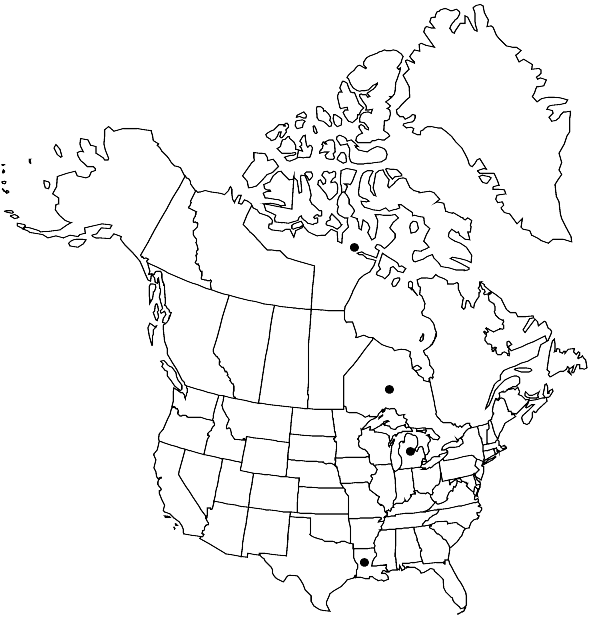Grimmia funalis
Bryol. Europ. 3: 119, fig. 247. 1845,.
Plants growing in dense, usually hemispherical cushions, breaking up readily, falling apart into clusters and string-like (spirally twisted leaves) single shoots, grayish green. Stems 2–5 cm, central strand present. Leaves usually spirally arranged when dry, patent when moist, lanceolate, 0.5–1.5 × 0.2–0.5 mm, appressed, of ± uniform length throughout stem, keeled, margins plane or recurved on one side, in female plants awns long and denticulate, in male plants very short to absent, costa weak proximally, projecting on abaxial side; basal juxtacostal laminal cells elongate, ± sinuose, thick-walled; basal marginal proximal laminal cells short-rectangular, hyaline; medial laminal cells short-rectangular, extremely sinuose, thick-walled; distal laminal cells 2-stratose. Gemmae absent. Sexual condition dioicous. Seta arcuate, 1.5–2 mm. Capsule occasionally present, exserted, yellowish green, obloid, weakly striate, concealed in awns, exothecial cells thin-walled, annulus present, operculum conical to rostellate, peristome teeth orange, split distally, papillose. Calyptra mitrate.
Habitat: Damp acidic rock
Elevation: moderate to high elevations (500-2000 m)
Distribution

Nunavut, Ont., La., Mich., Eurasia
Discussion
Grimmia funalis is frequently misidentified because it is extremely variable in height, color, and length of the awns. In optimal conditions, it forms extremely dense, grayish green cushions that break up easily into clusters and straight single plants. A distinctive feature is the string-like appearance of the dried-up shoots, which results from the spiral twisting of the leaves around the stem. However, Greven has also seen populations without such spirally twisted leaves. Under the microscope, the mid leaf areolation with yellowish, short-rectangular, very thick, and sinuose cell walls is characteristic. The formerly recognized taxa G. calvescens, G. imberbis, and G. ryanii are actually male plants of G. funalis. They grow in separate cushions with muticous to short-awned leaves, deviating greatly from the much taller, long-awned female plants. These male plants might be confused with G. elongata, which frequently grows in the same habitat, or with G. caespiticia. However, in G. elongata the basal cells are pellucid, straight, and thin-walled or only slightly incrassate. In G. caespiticia the basal cells are shorter, tending to be quadrate to short-rectangular, and the leaf apex is cucullate.
Selected References
None.